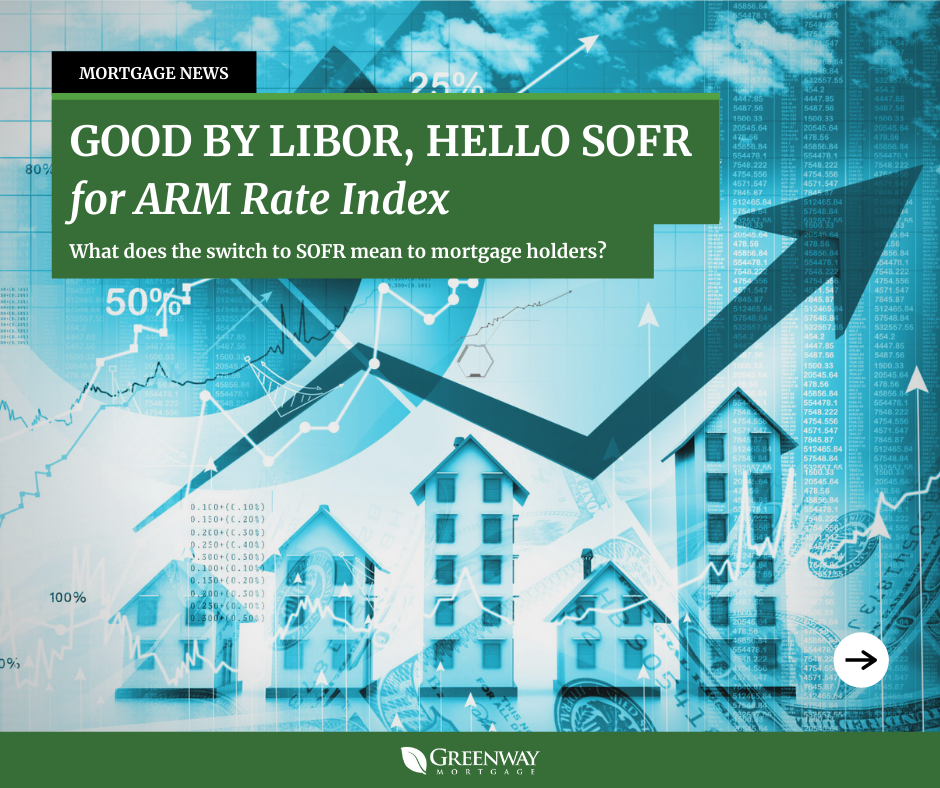Goodbye LIBOR, Hello SOFR for ARM Rate Index

A change is underway in the world of adjustable-rate mortgages and mortgage-backed loans such as revolving home equity lines of credit, known as HELOCs. For decades, the rates on those loans and a variety of other financial products were determined by an index called the London Interbank Overnight Rate (LIBOR). This is now being phased out in favor of a new index called the Secured Overnight Financing Rate (SOFR). Sometime after 2021, LIBOR is expected to be discontinued. However, the transition has already begun.
If you have an adjustable rate mortgage, a home equity line of credit or a reverse mortgage, it may be a good time to check with your servicer about which index your mortgage loan is tied to. Why? It could affect your rate the next time you’re due for an adjustment. To understand how this change might affect you, let’s dive into the key differences between LIBOR and SOFR.
-
A benchmark interest rate at which major global banks lend to one another in the international interbank market for short-term loans.
-
A forward-looking average rate, computed daily, at which a contributor bank can obtain unsecured financing in the London interbank market, in a process overseen by the ICE Benchmark Administration (IBA). Based partially on market-data “expert judgment”.
-
Based on 5 currencies: the U.S. Dollar, Euro, British Pound, Japanese Yen and Swiss Franc.
-
Incorporates a built-in credit-risk component because it represents the average cost of borrowing by a bank.
-
LIBOR has 7 varying rates on terms of one day to one year.
-
LIBOR is a critical component of the financial system, hardwired into not only global derivatives but also business loans, securitizations, floating rate notes, adjustable mortgages, and student loans.
-
Unlike LIBOR, SOFR is a secured overnight (backward looking), risk-free rate based on actual transactions collateralized by Treasurys.
-
It is an influential interest rate that banks use to price U.S. dollar-denominated derivations and loans.
-
Purely a daily rate.
-
Seen as preferable to LIBOR since it is based on data from observable transactions rather than on estimated borrowing rates. Also, because these transactions can be observed by anyone, it’s also less easily manipulated.
-
Some adjustable (or variable) rate loans and lines of credit like adjustable-rate mortgages (ARMs)
-
Reverse mortgages
-
Home equity lines of credit
-
Credit cards
-
Auto loans
-
Student loans
-
And any other personal loans




